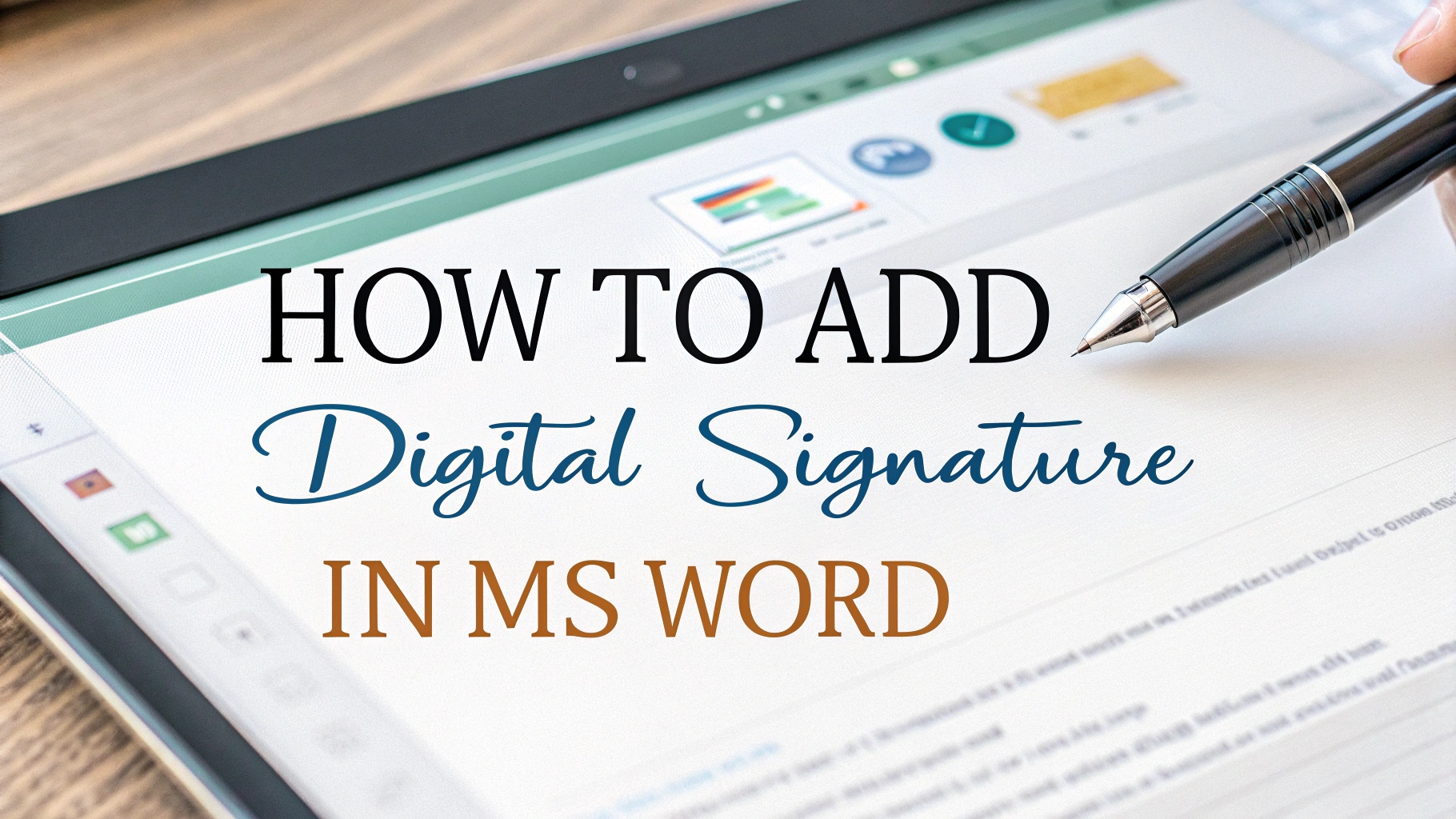Adding a digital signature to a Word document is a simple way to show that the document is authentic. It helps prove that the person who signed it really did so. Digital signatures also keep our documents safe and secure. They use special technology to make sure no one can change the document after we sign it.
In this guide, we will walk through the steps to add a digital signature in Microsoft Word. If you are signing a school project or a significant report, knowing how to do this can make your work look professional and trustworthy.
Table Of Contents
Understanding Digital Signatures in Microsoft Word
Digital signatures in Microsoft Word are critical for ensuring document security and authenticity. They act like a virtual fingerprint, confirming a document’s legitimacy and integrity through the use of cryptographic keys and a certificate authority that verifies the signer’s identity.
To create a digital signature, follow these steps:
- Open your Word document.
- Click on the Review tab.
- In the Protect group, select the Sign button.
- Choose Insert Signature Line to create a designated space for your signature.
- Follow the prompts to finalize the signature setup.
Digital signatures improve document integrity, streamline workflow automation, and promote online collaboration. They make sure legal compliance and provide non-repudiation, meaning the signer cannot deny signing the document.
For in-depth guidance on managing documents in Word, check out this resource on sharing documents.
Grasping digital signatures is critical for anyone involved in electronic transactions. They play a key role in maintaining trust and security in our digital communications.
Steps to Insert a Digital Signature
To insert a digital signature in Microsoft Word, follow these simple steps:
- Open your document: Launch Microsoft Word and open the document you want to sign.
- Access the Insert tab: Click on the Insert tab at the top of the window.
- Select Signature Line: In the Text group, click on Signature Line.
- Complete the Signature Setup: A dialog box will appear. Enter your name and title, then click OK.
- Add your signature: Right-click the signature line in your document and select Add Digital Signature. Follow the prompts to complete the signing process.
Incorporating a digital signature enhances document security and guarantees authentication. It also maintains document integrity and supports legal compliance.
“Digital signatures are critical for efficient document management and workflow automation.”
Ensuring Document Security with Digital Signatures
Document security is critical, especially with digital signatures. These signatures act as a virtual fingerprint, confirming the signer’s identity. In Microsoft Word, adding digital signatures is simple and effective for safeguarding your files.
To create a digital signature in Word, follow these steps:
- Open your document and click the File tab.
- Select Info, then choose Protect Document.
- Click on Add a Digital Signature.
This process uses cryptographic keys to verify your identity. Signing a document ensures document integrity and prevents unauthorized modifications. If someone alters the document later, the signature will reveal any tampering.
Digital signatures also ensure legal compliance. They are recognized by laws worldwide, making them valid for contracts and agreements. This is especially useful in online collaboration, where sharing electronic documents is common.
For detailed instructions on using Word features, check out this helpful guide.
Using digital signatures in Word not only secures your documents but also enhances your workflow. It’s an effective way to protect your digital identity and keep your files safe.
Legal Compliance and Best Practices for Digital Signatures
Digital signatures are critical for legal compliance and document security. They act as a virtual fingerprint, verifying the signer’s identity and ensuring the document remains intact. In Microsoft Word, adding a digital signature is simple yet necessary for preserving document integrity.
Do these key best practices:
- Use a Signing Certificate: This certificate verifies your identity.
- Make sure User Consent: Always secure permission before signing.
- Maintain Audit Trails: Record who signed and when for accountability.
- Follow E-Signature Laws: Stay updated on local regulations regarding digital signatures.
To add a digital signature in Word:
- Go to the Insert tab.
- Click on Signature Line.
- Fill in the details and sign.
By following these practices, you make sure your documents are secure and legally binding, fostering trust and efficiency in online collaboration.
Summing up
Adding digital signatures in Word documents is a simple way to secure our significant files. It helps prove who we are and shows that we agree with the content. By following the steps we discussed, we can easily create and use our own digital signatures. This not only makes our documents look professional but also keeps them safe. Remember, using digital signatures is a smart choice for both personal and business documents. Let’s keep our work secure and trustworthy!




